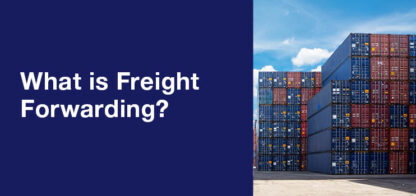In the evolving landscape of global trade and logistics, technologies once reserved for large multinationals are now becoming accessible and valuable to small and medium-sized enterprises (SMEs). One such innovation is digital twin technology, increasingly used in supply chain management to improve planning, visibility, and resilience.
What is a Digital Twin?
A digital twin is a virtual representation of a physical object or process. In logistics, this could mean a warehouse, a shipping container, a route, or even an entire supply chain network. It uses real-time data from sensors, systems, and operations to mirror current conditions. While the term might sound futuristic, its application is quite practical, particularly when combined with simulation tools.
Simulation: Planning for the Unpredictable
Simulation allows businesses to model various scenarios using the digital twin. For instance, what would happen to delivery times if a key supplier is delayed by three days? How might rerouting freight through a different port affect costs or timelines? These “what-if” scenarios help SMEs make informed decisions based on evidence, not guesswork.
For SMEs involved in import/export, this is especially relevant. With increasingly complex customs procedures, fluctuating shipping rates, and the unpredictability of global logistics, having the ability to simulate different options can significantly reduce risk.
Why It Matters for SMEs
Traditionally, digital twins have been associated with large corporations and high capital investment. However, more accessible tools and data platforms are changing that. SMEs can now adopt scalable versions of this technology to manage:
- Inventory flows
- Freight route planning
- Customs clearance bottlenecks
- Warehouse layout efficiency
These applications don’t require a full digital overhaul but can be introduced incrementally, particularly by working with forward-thinking logistics partners who offer integrated digital services.
Resilience and Efficiency in Uncertain Times
Recent global events, from port strikes to supply shortages have shown how vulnerable even well-managed supply chains can be. For SMEs, the consequences of disruption can be more severe due to limited redundancy and tighter cash flows. Digital twins offer a way to prepare in advance by identifying potential points of failure and testing alternative strategies.
For example, a UK-based SME importing goods from Southeast Asia could use simulation to understand how different incoterms (e.g. FOB vs CIF) or port choices (Felixstowe vs Rotterdam) might impact total cost and lead time. It’s not about replacing human expertise, but enhancing it with data-led foresight.
Making It Work Without Major Overhead
At Burhill Logistics, while we don’t lead with flashy tech, we do believe in pragmatic digital transformation by using the right tools to empower smarter decisions. For SMEs, that means integrating manageable digital processes and leveraging partner capabilities to gain the benefits of technologies like digital twins without the need for a major in-house investment.
In summary, digital twins and simulation are no longer just buzzwords. They represent a shift in how businesses, large and small, can think ahead, reduce uncertainty, and remain agile in a dynamic trade environment.



